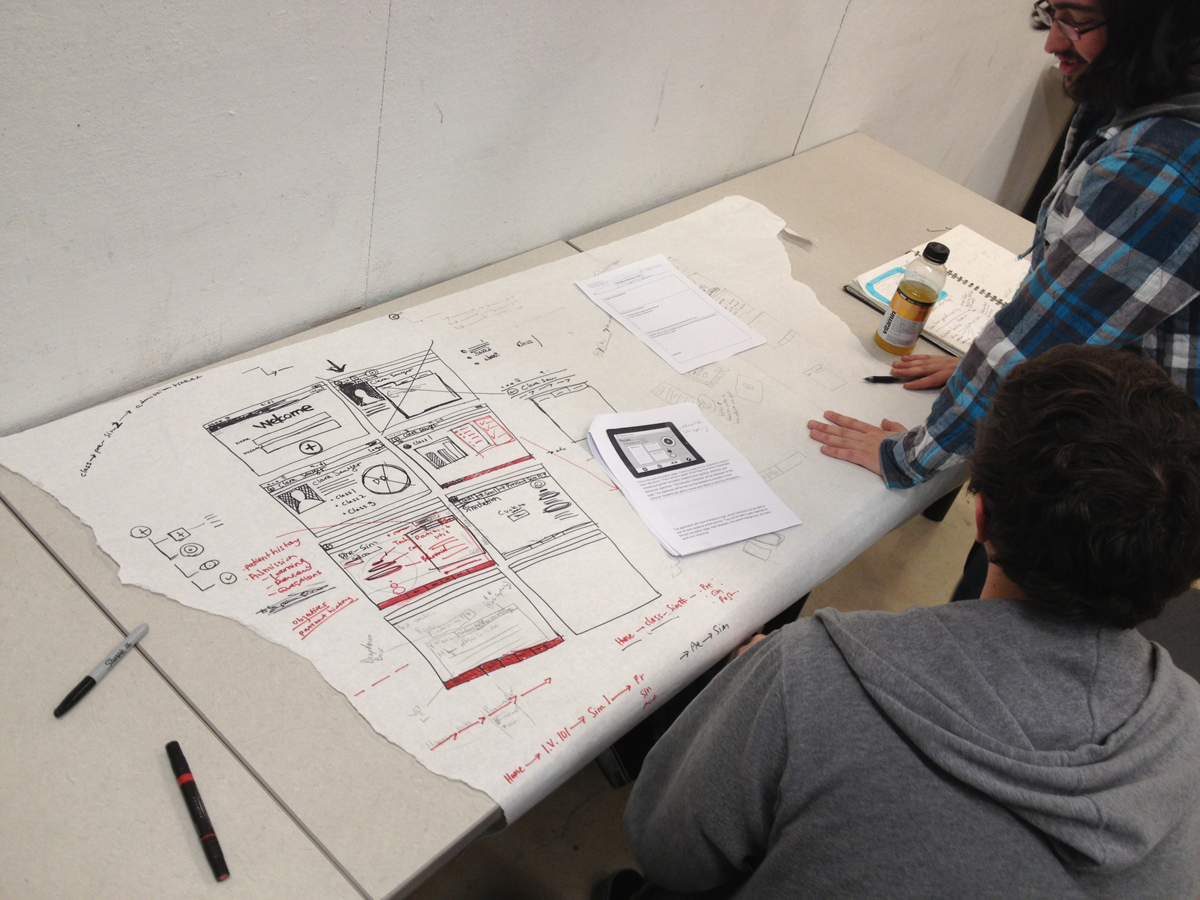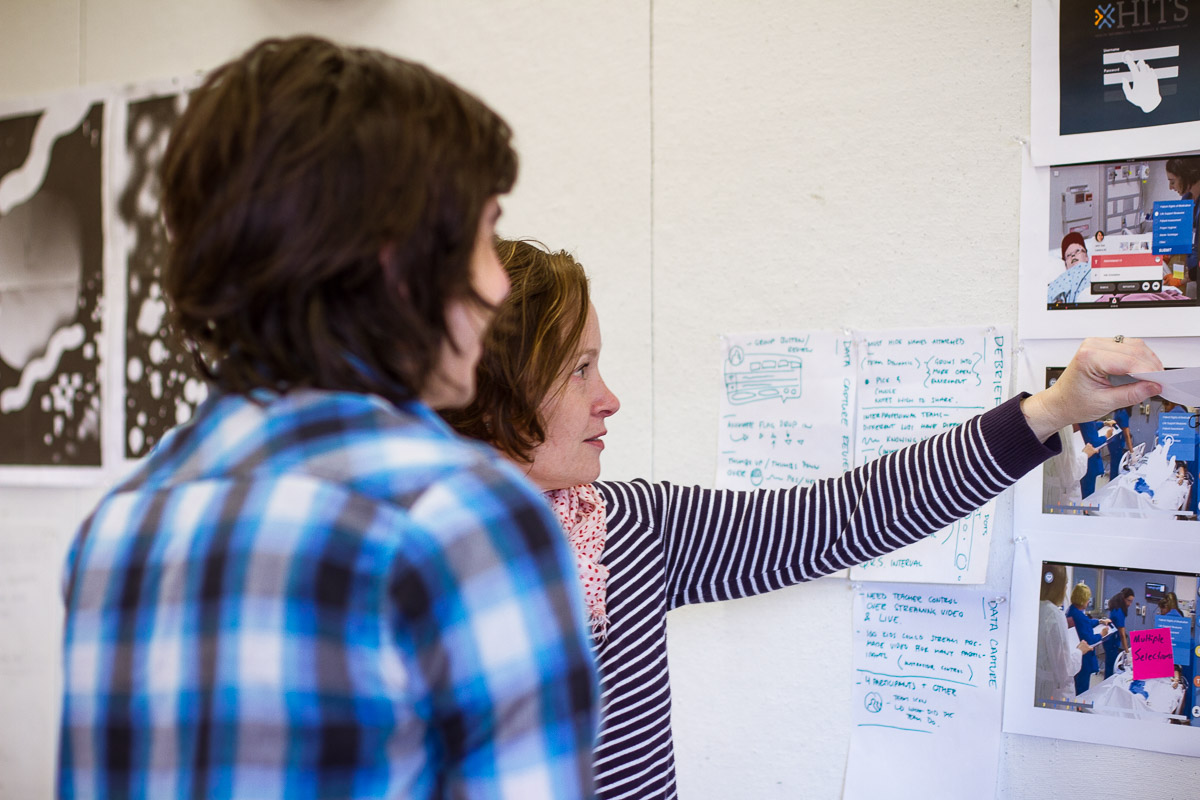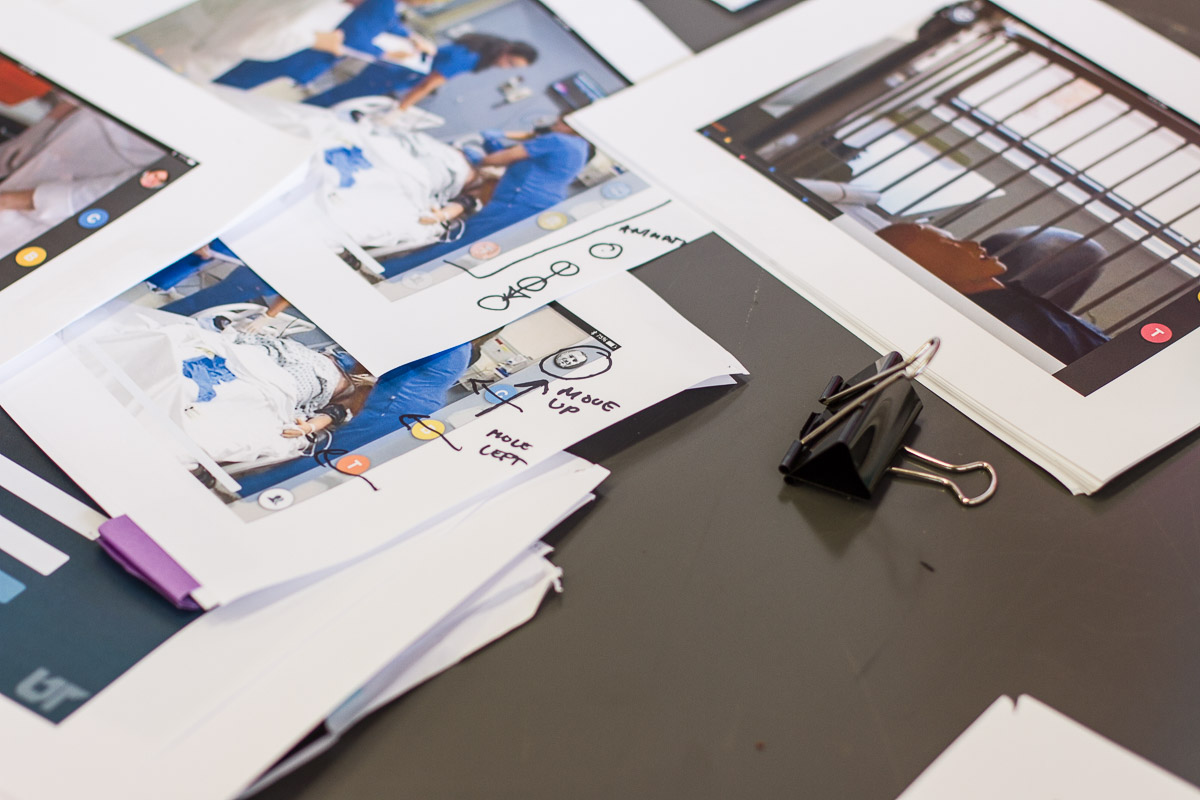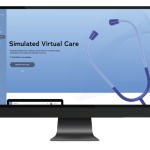The key element of a HITS project is collaboration. Professional collaborators come from many domains, however at its core, HITS is a triumvirate of talent.
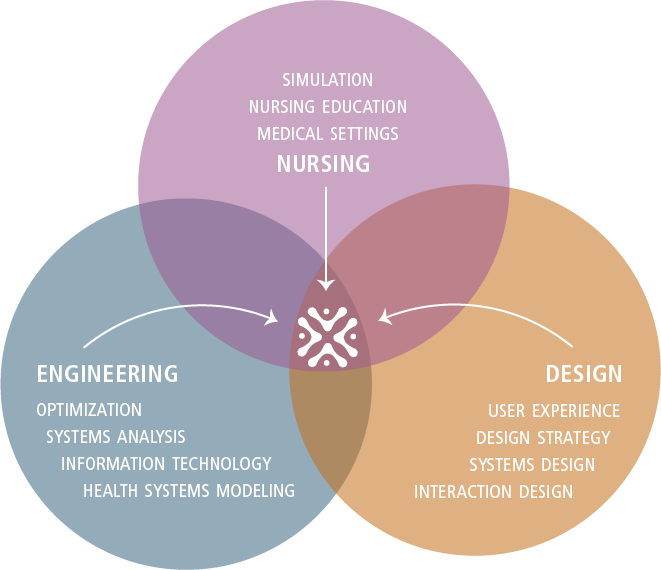
Through a divergent process, challenges are sought and examined. The resulting innovation can take on many forms depending on the scale and scope of the challenge. This can include, but is not limited to:
PROTOTYPES
WALKTHROUGHS
STRATEGIC DOCUMENTS
WIREFRAMES
OUTCOME ANALYSIS
SOLUTIONS PATHWAYS
HARDWARE
PARTNERSHIPS
TRAINING
MEDIA
SOFTWARE
WHITE PAPERS
At the outset of each project, the HITS team determines the best methodology, or process, that is needed given the constants and variables of the project. Structured loosely around the concept of Design Thinking, a human-centered design approach that puts the audience first, the HITS methodology is flexible, iterative, and led by a question.

Empathy is at the heart of healthcare. Understanding the perspectives of another person provides insight into the needs and challenges they face. The same can be said for developing products, systems, and services for improving healthcare. The needs of the audience at the heart of the outcome are critical to knowing whether or not conclusion is viable. Whether it is truly of value and serving its intended need.

In addition to seeking to understand, HITS also puts an emphasis on asking questions in order to get to the root of a need. Solutions can oftentimes be overshadowed by the wrong voice if the true root of the problem is not explored. Take for example an opportunity to innovate within a patient room inside a hospital setting. Without understanding what innovation means, or having a process to engage with, conversations are bound to circle around first thoughts, technological trends, or singular examples. It is critical in starting out that the right questions get asked that assist the team in moving beyond assumptions and into core needs.

Once there has been sufficient inquiry into the needs, the HITS team then moves through a series of ideation exercises designed to lead to an array of outcomes. From the complex to the mundane, all possibilities are laid out. From here patterns can emerge that may lead to critical discoveries not obvious at the outset. As the idea generation unfolds, so does the rapid prototyping. Developing low fidelity (ie. analog or low-tech) prototypes rapidly, allows the team to make quicker evaluations of an idea and move back to ideation in order to move quickly to the next version. It allows for potential errors to be worked out before getting into more involved technical solutions where changes become more costly. The HITS team actively involves the intended audience at this stage in order to gain insight into the effectiveness of the prototype.
